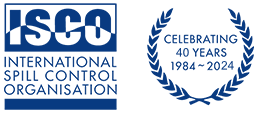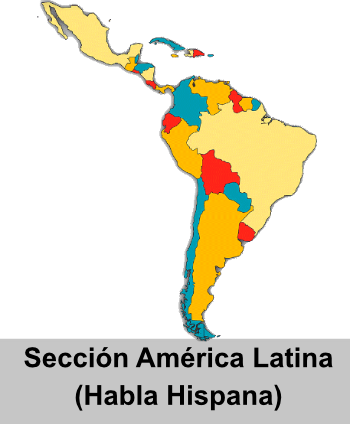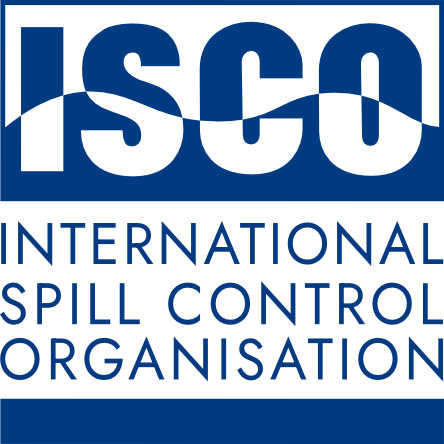Author: Carlos Sagrera, MSc.
ISCO Representative Latin America
(Rev. Matthew Sommerville – ISCO EC – English Version)
This Case Study deals with the largest Latin America spill incident of the 21st century and the linked environmental, economic and social consequences which offer an important learning opportunity. For this reason and due to the subsequent management of it, it has been included as a Case Study in the ISCO-OceanPact International Seminar to be held in Brazil (Rio de Janeiro, October 27, 2023).
On Saturday, January 15, 2022, the Italian flagged tanker Mare Doricum, arriving from Brazil, proceeded to unload its crude oil (28°2 API) cargo at the Multibuoy Terminal No. 2 of the La Pampilla Refinery in Repsol company (ISCO Newsletter N°822 – January 2022).
A chain of events starting in distant Tonga (10,000km from Peru) resulted in damage to a pipeline and the loss of oil to the marine environment. The definitive chain of event and cause of the incident is still being investigated with as normal different parties information, recollections and views based on their individual perspectives being collated and reconciled in technical investigations and legal process that will surely take time to conclude. For the Peruvian state, as one example, its 4,500 million dollars claim is at stake. The spill of some 11,900 bbls of intermediate crude generated significant ecological impacts in an area rich in fishing and marine fauna and spread along nearly 100 km of coastline and islands including protected parks to the north of the capital Lima.

The review will examine three of the aspects that will be developed in depth at the ISCO-OceanPact International Seminar, by specialists who were present at the incident.
First, some considerations about the causes.
To date, there are relevant and serious technical reports in Peru, not yet made public but in the possession of the Environmental Prosecutor’s Office in charge of the case, which analyse the versions of the two main parties involved and input from other stakeholders. On the part of the tanker Mare Doricum, it is understood that the spill is caused by failures in the infrastructure of the multibuoy (PLEM – end-of-pipe collecting system; oil pipelines; hoses), which according to expert reports diverged from the design and what was actually installed (https://larepublica.pe/politica/actualidad/2023/01/06/repsol-peritaje-detecta-que-tuberia-se-rompio-por-falla-de-fabrica).
The foregoing is also aggravated, according to the defence by the tanker operator, by the lack of adequate reaction of the officials assigned by the company at the time of the incident, all contested in relation to their presence on board and their adequate expertise, something not specifically regulated in Peru that adheres to the general standards in use in the industry.
For its part, the La Pampilla Refinery, it is understood that the cause was due to an abnormal movement of the ship, due to strong waves (originating from the volcanic eruption on the island of Tonga the previous day, January 14 at 11:27 p.m. ), which would have caused the tanker to collide or rub against the multibuoy and/or its infrastructure, causing the PLEM to break or fragment, which implied the leak “by impact or pull of the hose train from the ship”, due to what is indicated indicate would be the main cause of the spill.
The issue of the possible tsunami was never recognized by the National Maritime Authority (AMN – responsible in Peru for issuing the corresponding alarms), for which it had plenty of time since the eruption in Tonga occurred almost 18 hours before the alleged waves.
It is this swell that is alleged to have been the cause of the sudden movement that broke one of the mooring lines to the buoy. The reasons for this non-alert in Peru are detailed in the Report on the most complete spill made public in Peru by the Congress of the Republic in March 2023 (Commission of Andean, Amazonian and Afro-Peruvian Peoples, Environment and Ecology – https://leyes.congreso.gob.pe/Documentos/2021_2026/Informes/Comisiones_Investigadoras/OFICIO-758-2022-2023-CPAAAAE-CR.pdf).
In it, it is emphatic in pointing out that “On the Peruvian coast there were no abnormal waves…”, but there were “unusual behaviours of the sea”, due to “…the presence of abnormal waves as a result of the volcanic eruption…” (sic). Specifically, it states that “… these variations do not exceed a height of 1 meter, and the Multibuoy Terminal No. 02 can operate with waves of up to 2 meters in height”” It is generally accepted that there were peaks higher than average that day, but less than 2 meters. And he ends by lauding that… in the bay of El Callao there were no abnormal waves at the time of the operations, the height was less than 0.5 meter” (sic). This is the official position of Peru, as indicated by the AMN, as an affected state and in relation to the tsunami cause.
Regarding the reaction on board of the actors, it is one of the points that is handled with greater discretion in the investigation, the Captain and the crew being directly involved, who raised letters of protest immediately to the incident, as well as the representatives delegated by the loading master and who were present at the time of the incident.

As can be seen in the public reports, and in all the statements of the relevant authorities, the legal parties have a lot to argue in one direction or another, also considering multiple statements from witnesses and other intervening actors.
Secondly, let’s look at some interesting aspects of the initial management of the spill.
The first thing that must be said is that it was an oil industrial disaster, intrinsic to these activities, and that it should have been contemplated in the risks of its National Contingency Plan (NCP). Unfortunately, it was not updated in Peru (original from 1993), so the authorities could not apply it and instead activated a District Plan, dimensioned for Tier II levels in the affected area.
The issue is that, precisely because of this lack, there were delays in the assessment (in a few days the spill affected close to 100 km of the Peruvian coast), due to scarce information and that it arrived very late and in some cases erroneous of the main actors and that, given the lack of precise information, they minimized the event, which caused the Peruvian political authorities to classify the incident, based on the public denunciations that appeared in the following days, as “one of the biggest ecological and environmental disasters in recent years in Peru.”
With good schemes and organization to deal with natural disasters in this situation in Peru and initial delay of the responsible authorities, the political decision was made to request technical support from multiple United Nations agencies. With rapid reaction schemes, UNEP–- OCHA, as well as the Civil Protection Mechanism of the European Union, the Government of Norway and the United Nations Disaster Assessment and Coordination (UNDAC) are immediately present. Likewise, experts from internationally recognized organizations specialized in spill control (CEDRE from France; ISPRA from Italy; Norwegian Coastal Administration from Norway; Salvamento Marítimo from Spain, activated by their Embassies) arrive jointly. All these organizations will later qualify the incident in their initial report as “the worst ecological disaster in the recent history of Peru” – https://www.actualidadambiental.pe/derrame-de-petroleo-naciones-unidas-emitio-informe-por-vertimiento-del-crudo-en-mar-peruano/.
Apart from the previous organizations, the presence of ITOPF must be especially highlighted, for several months and even with subsequent seminars on lessons learned (ISCO Newsletter N°883–- April 2023), which in its role as a reference advisor for the P&I of the tanker, which will have a significant role together with the National Maritime Authority in the development of the response.
This response had many positive aspects after being well implemented, with the support of the company REPSOL, which probably formed one of the most effective ICS that the region has seen for this type of incident. Support from OSROs such as Lamor Peru – www.lamor.com – and COAM – https://coamperu.com/ and https://compromisorepsol.pe/eric-stucchi/ – who were locally in charge of the first response at sea, managing vessels and initial authorizations for an activity never before implemented on that scale in Peru, and in the case of Lamor later with its action in cleaning up the coastline under the leadership of REPSOL; Clean Pacific (https://cleanpacificperu. com/) for subsequent responses at sea under the direct management of REPSOL; OSRL (https://www.oilspillresponse.com/es/) with technicians with extensive experience in complex spills for the difficult cleanup of the coastline and the supply of first class equipment, and other companies specialized in Valuation and Wildlife issues, such as OCC, ERM, AIUKA, etc., leaders worldwide. At the local level it must also be said that there were local Peruvian companies involved in the titanic work carried out for the coastal cleanup, which were assigned specific sectors of the coast and were integrated to the ICS by REPSOL (https://compromisorepsol.pe/?utm_source=google_text) and all finally supervised by the Peruvian environmental authority (OEFA).
The NOAA, the US Coast Guard and the IMO, which are presented later in Peru, had autonomous roles from the previous organizations, advising OEFA (Peruvian environmental authority), the AMN (DICAPI) and the Peruvian Foreign Ministry.
There is no doubt that it was the largest deployment in terms of international support, that an oil spill incident of these dimensions has had in Latin America this century, which was positive in the long term, but that has as its root cause precisely the lack of an updated National Contingency Plan sized according to this type of risk in Peru.
If there had been a Plan up to the task, the authorities themselves would have made expeditious decisions and organized themselves, procuring the material resources, equipment, and specialized personnel appropriate to the circumstances, without having to wait for opinions from third parties that always take time. In oil and spill control jargon, it is called developing the Common Operating Picture (COP) and that is what ultimately allows for an effective National Contingency Plan.

Finally, the third and last aspect to mention in this review refers to possible matters of cooperation with neighbouring countries.
In relation to this type of incident, in accordance with what is promoted by the IMO (Art. 10 OPRC 90 Convention (https://www imo.org/en/OurWork/Environment/Pages/Pollution-Response.aspx).
Peru is a member of this OPRC Agreement, like most Latin American countries, but it does not have specific bilateral agreements with neighbouring countries on the issue of oil pollution, something recurring in the continent for various reasons. Exceptions to this are the Argentina-Uruguay MOU (1992)
and the Mexico – USA MOU with Mexus (https://www.glo.texas.gov/ost/spill-response-resources/additionaldocs/mexusplanspanish.pdf).
However, there are agreements between the General Staffs of their Navy and even agreements between border maritime authorities, which is also promoted at the declarative level by ROCRAM (https://www.imo.org/es/OurWork/TechnicalCooperation/Pages/LAC.aspx)
In this last framework, some common activities have been carried out before this incident with the participation of units of the Coast Guard of Peru and Ecuador, with the support of shipping companies in the border areas, for which the Port Captaincies activate their local contingency plan (Puerto Bolívar – October 2019).
In this spill incident in Peru, there was no direct cooperation with Peru´s neighbouring countries, probably due to the lack of those specific agreements, which was highlighted by the IMO in its final report on the incident and suggested to the Government of Peru to plan to replicate similar cooperation activities, for example, with Chile. In the same way, the IMO has suggested to Peru after this incident the possibility of considering the ratification of two Conventions with environmental implications and in relation to oil spills, such as the Bunkers Convention of 2001 (International Convention on Civil Liability for Bunker Oil Pollution Damage) and the Fund Convention with its extension Protocols of 1976 – 1992 – 2003 (International Convention on the Establishment of an International Fund for Compensation for Oil Pollution Damage, 1992). In the case of the Fund Convention, it should be noted that it is the importers of oil who finance it and broadly complement the coverage of ship owners covered by the CLC (International Convention on Civil Liability for Oil Pollution Damage) by that if Peru is adhered – https://www.imo.org/en/OurWork/Legal/Pages/LiabilityAndCompensation.aspx
In relation to the Fund Convention, it should be noted that 5 South American countries are part of it: Argentina, Colombia, Ecuador, Uruguay and Venezuela. In the case of the Bunkers Convention, to date only Panama from the region has joined.
The three aspects reviewed here about this Case Study of the incident in Peru, are part of the topics that will be presented at the ISCO-OceanPact Seminar (ISCO Newsletter N°887 – April 2023), which will include lessons learned and certainly there were, in addition to the visions of the international experts. In this sense, the prestigious CEDRE of France, coauthor of reference to the initial UN Report already indicated, has been confirmed, as has the presence of AIUKA of Brazil with its key role and that directed all the work to recover contaminated wildlife in Peru, in what is considered to be one of the best rescue operations for these animals that has been carried out in Latin America with this type of incident.
The most recognized and prestigious voices in Brazil on the issue of oil spill control have ensured their participation and invitations have been issued to other organizations (IMO, ITOPF) that are evaluating their participation, according to their priorities, for which we hope to gradually incorporate them to a Program that is evolving.
A final round table will allow the exchange with the experts and answer to questions from the participants about this Case Study, after which we hope it will end with conclusions that allow Latin America to understand and learn about the management of these risks, prevention and response, according to current times that require transparency from the oil and maritime industry and from the authorities involved objectives and effectiveness for its concretion.
Those interested in knowing the details of the Program can access the information on the ISCO website:
http://spillcontrol.org/isco-oceanpact- brazil-international-seminar/
and to register for direct participation in the OceanPact website:





